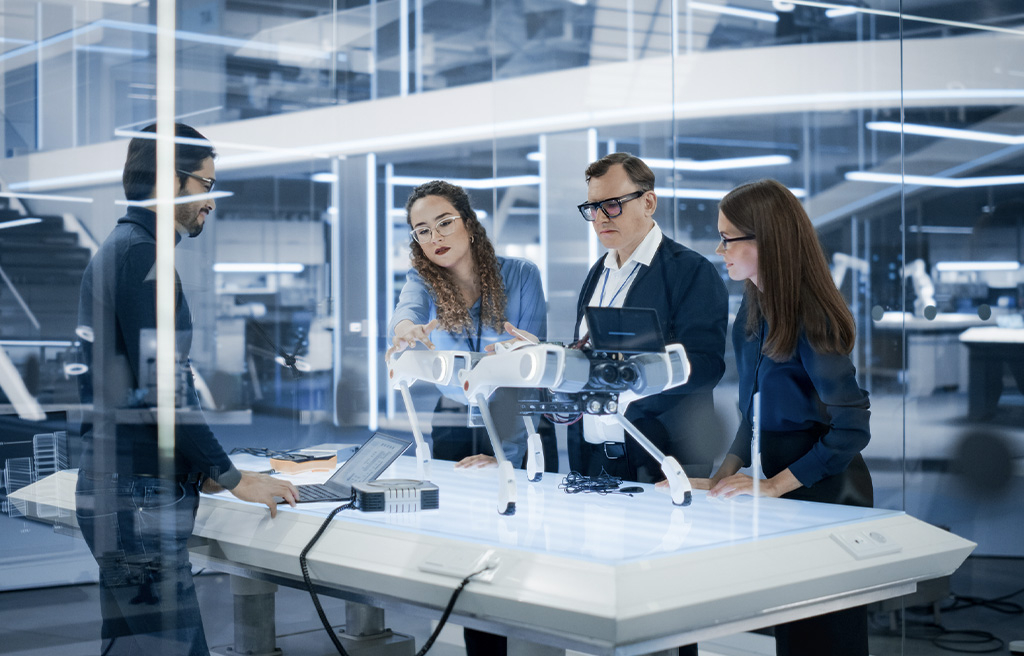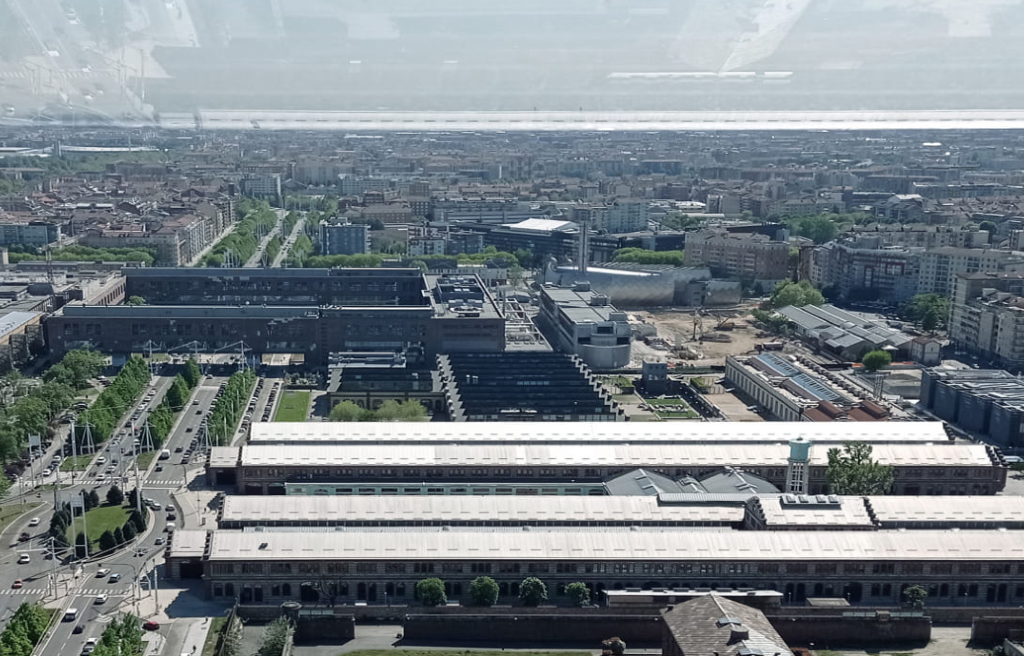Startup Tales | How Oraigo prevents drowsiness while driving
The innovative company founded in Padua in 2019 has developed and created a device that, thanks to AI and brain waves, detects driver drowsiness, warning them before the problem can cause road accidents.
Sleep is indeed fundamental for human life, but it is also an insidious enemy for motorists. In fact, about 148.000 road accidents recorded annually in Italy, which represent 25% of the total, are caused or contributed to by drowsiness: a nightmare for drivers and passengers.
To solve this problem, however, exist an innovative device that, through a headband positioned on the forehead and equipped with electrodes, monitors the brain activity of drivers, transmits the signals detected from brain waves via Bluetooth to a mobile app that uses Artificial Intelligence, and warns drivers before drowsiness causes road accidents.
The innovation was realized by the young AI and neurotech startup Oraigo, founded in Padua in 2019 by Michele Galetta (CEO) with the support of the Venetian entrepreneur Nicola Rizzato, accountant Paolo Cognati, and in collaboration with the University of Padua and the Sleep Center Negrar of the Verona Hospital. After a long journey of studies and experiments, in 2020 the method was patented, immediately becoming the global gold standard in this field.
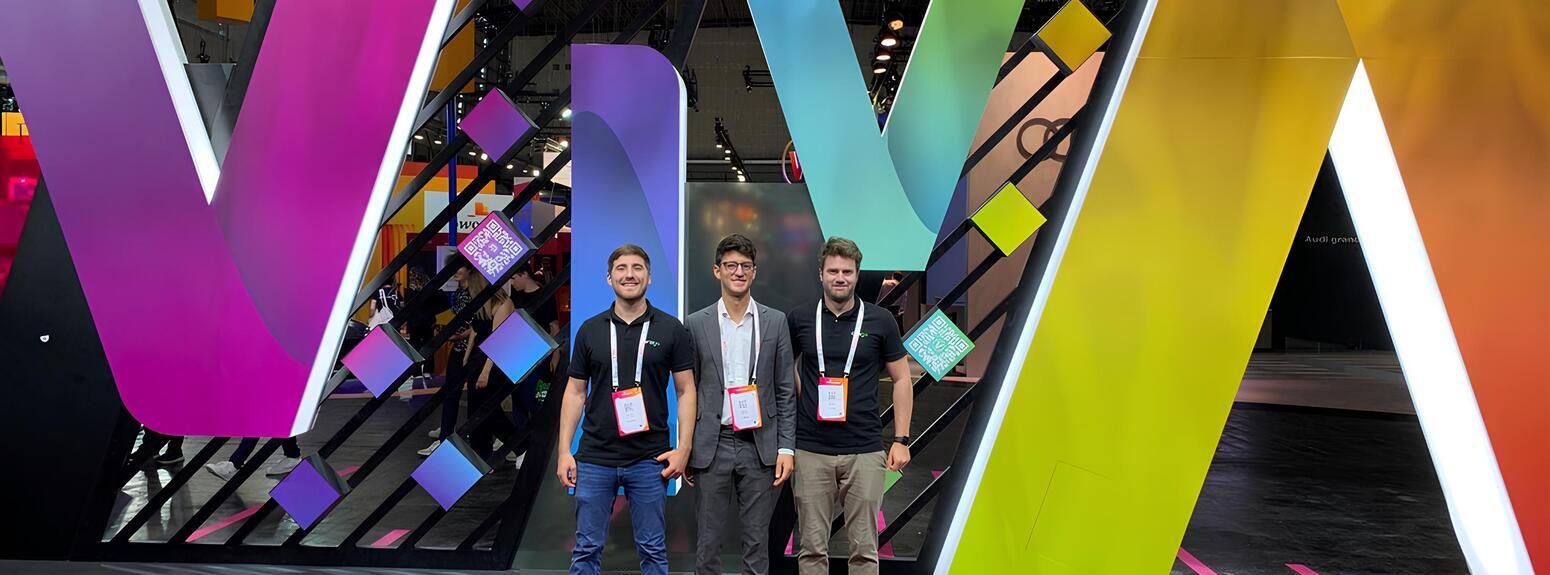
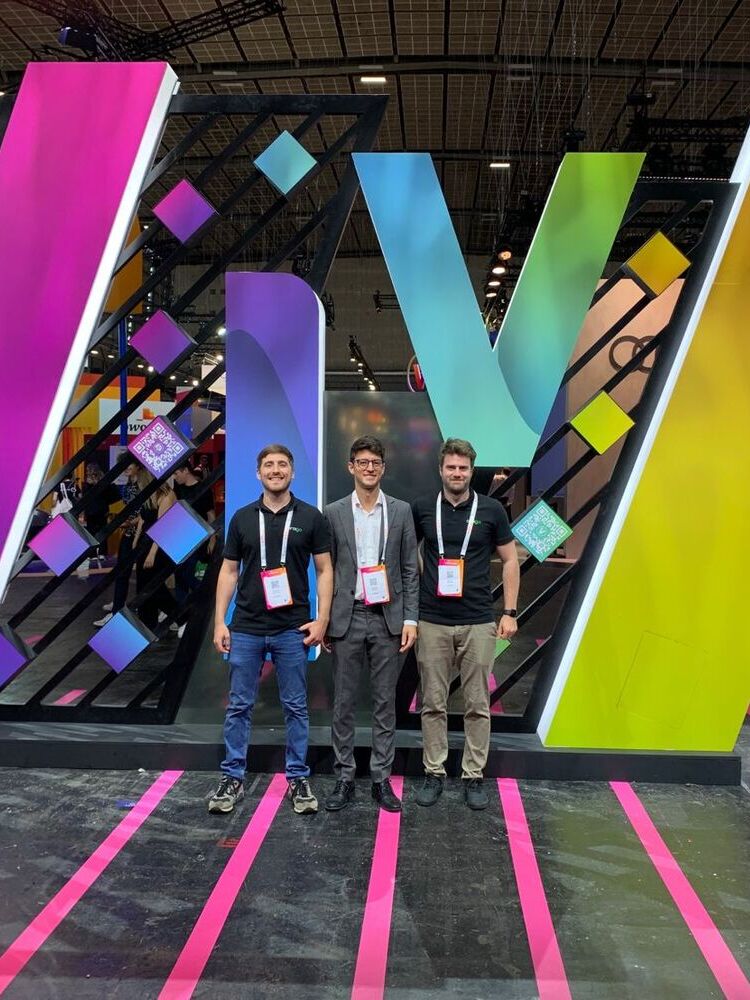
How Oraigo was born: from the idea to the innovative startup constitution
The idea behind the innovative entrepreneurial initiative has distant roots. “My relatives are from Puglia,” says Galetta, “so, after getting my driver's license, I often drove at night on the Adriatic highway to visit them. The last stretch is an endless straight line, and I often experienced drowsiness. Given this, I wondered how it was possible that there wasn't a device capable of keeping me awake.”
Michele Galetta's background and meeting Nicola Rizzato
Starting from this premise, the co-founder of the Venetian company decided to develop a technology capable of solving the problem and, during his studies in Economics and Finance at Ca' Foscari University of Venice (completed in 201), he thought about how to realize it.
A journey in which the first turning point lies in a fun meeting with Nicola Rizzato: “One evening I was in a club and practically rushed to him, he replied with a phrase in Venetian dialect telling me it wasn't the right time but, interested in the proposal, he left me his contact. The next day I went to his office, presented my idea, and he asked me to create a business plan,” says Galetta.
Galetta's trip to Tel Aviv and return to Italy to found Oraigo
“I was finishing university,” continues the CEO of the Padua-based company, “and the professors suggested I go to Tel Aviv (one of the most vibrant innovative ecosystems for startups, ed.), so the day after graduating I flew to Israel, staying there for about a month”.
Once in Israel, Galetta toured incubators and accelerators to understand how to raise the necessary capital to develop the idea and establish the company, but “no one wanted to sign confidentiality agreements on the project, so I chose to return to Italy to fund the startup,” emphasizes the CEO of Oraigo.
Involvement of the University of Padua and the Sleep Center of the Negrar hospital
However, knowledge of AI is not part of Galetta's background, so he involved the University of Padua to rely on senior expertise and high-level collaborators. “I started working on the AI model for the project, but data not available in public datasets was needed. Therefore, a specific dataset had to be created, necessary to transform my idea into an innovative and particularly useful business,” explains the CEO of Oraigo.
“In addition, to understand how to address the problem of drowsiness, I turned to the Sleep Center of the Negrar hospital in Verona, following a 3-year masterclass on the subject,” recalls Galetta.
The choice of methods to create a usable dataset to counteract drowsiness at the wheel involves using a smartwatch and falls on a go-kart track for two reasons: on the one hand, the possibility of driving at night, when drowsiness at the wheel is more pronounced; on the other hand, containing costs, which, using driving simulators at night, would have been high.
Results of the first tests for Oraigo's technology
After conducting the first tests, Galetta realized that using a smartwatch it is indeed possible to detect driver drowsiness, but only when they wake up from the shock. “After understanding the problem, I set out to conduct other tests in which to detect all possible data from the entire human body to identify the best ones to develop the idea,” explains the CEO of Oraigo. A particularly challenging phase, in which the co-founder of the Padua-based company slept in the office during the day, then went to the track at night.
Addition of the neurotech component
From the tests, conducted using paste and gel used on electrodes for electroencephalograms (EEG) inserted in a special helmet, Oraigo realized that the signals to anticipate drowsiness at the wheel mainly come from the brain. Consequently, wanting to create a compact device, thanks to the support of important technological partners, who collaborated with NASA, NIH (National Institutes of Health), and Darpa (American army), the startup developed and used the first headbands.
After the circuit for “mini cars” in 2023, the innovative company conducted the largest study on drowsiness at the wheel globally, at the historic Enzo and Dino Ferrari International Autodrome in Imola. The study lasted a week, involving about 60 people including drivers and co-drivers. “The drivers drove all night on the track and finished at 7:30, with the Autodrome granted for the first time in its long history for activities of this type and, next to us, a Formula 1 team (Alpha Tauri, ed.) that was there to conduct traditional test sessions,” recalls Galetta.
How Oraigo's Technology Works to Prevent Drowsiness at the Wheel
The device created by Oraigo is part of the BCI (Brain Computer Interfaces) sector, i.e., brain-machine interfaces, and during the Imola tests, it is mature and in the refinement phase.
The headband used for data collection that detects the driver's brain activity is called Aigo: a wearable device with a minimal and attractive design. The second component is Go, a mobile app that, thanks to an innovative system and Artificial Intelligence, analyses users' cognitive state in real-time. Thanks to the Bluetooth connection with Aigo, the application activates sound, visual, and vibration alerts before drowsiness occurs.
The technology is completed with the web app Fleets, which processes the data, providing advanced analysis and performance tools for fleet management, increasing safety, efficiency, and productivity of drivers.
“The mobile app is able to identify specific patterns related to drowsiness through brain waves. When the driver is about to fall asleep, the app emits a slight vibration accompanied by a sound alert, and the user has two seconds to respond by blinking, communicating that they are alert again,” explains Galetta. “Usually it goes like this,” continues the CEO of Oraigo, “but otherwise we intervene with Aigo vibrations, sound and visual alerts in the mobile app, with eye blinking detected at the brain level by the electrodes.”
The Uniqueness of Oraigo's Innovation
A huge advantage over other solutions on the market, as Oraigo's technology does what cameras and sensors dedicated to drowsiness at the wheel cannot do: it intervenes in advance to prevent them. “Many drowsiness episodes occur with open eyes and are therefore not detectable by other solutions. This makes Oraigo the gold standard in the sector, and other companies proposing or developing technologies to address the problem must compete with us,” explains Galetta.
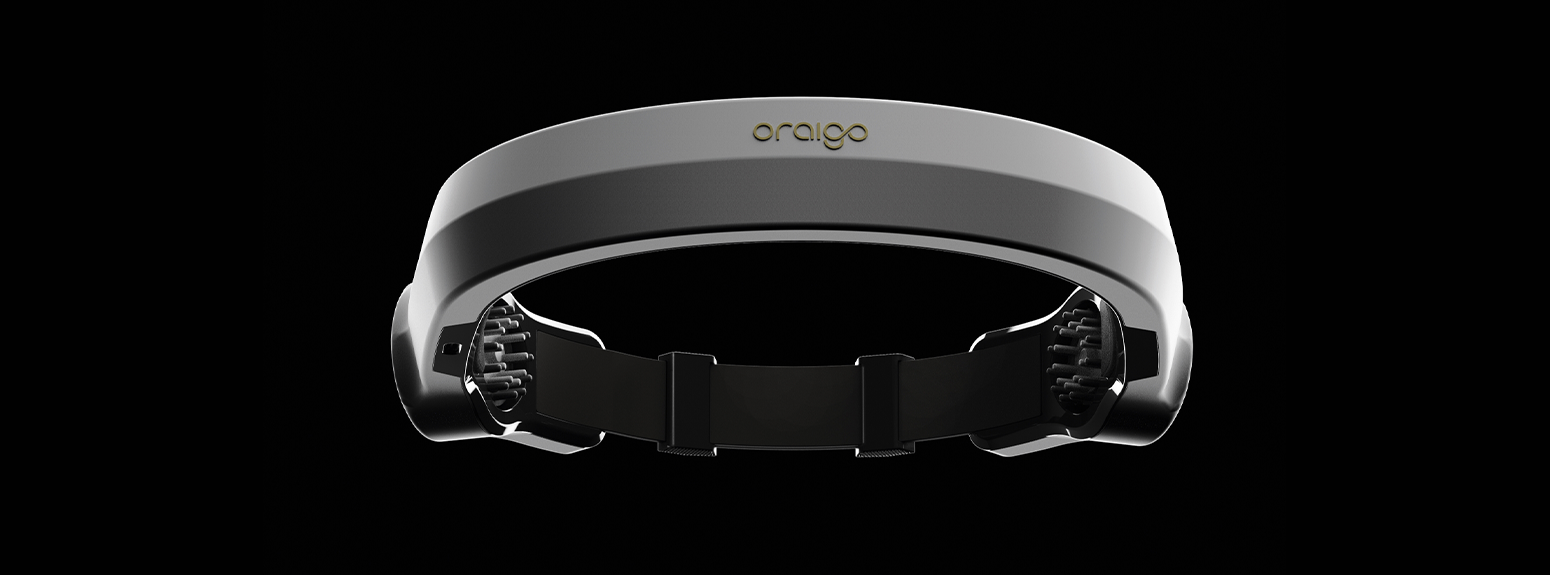
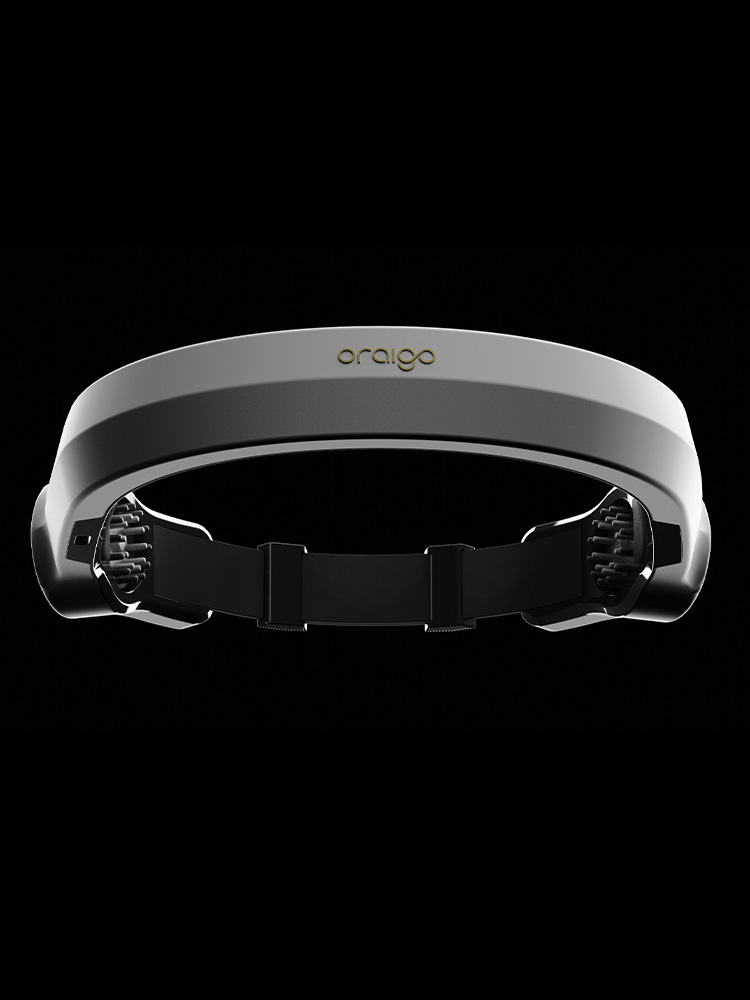
Oraigo's Target Market
The innovation developed by Oraigo is designed for transport companies and, more generally, for all professional drivers working on variable shifts. The Padua-based startup collects driving data, anonymizes and aggregates them through its web platform, offering fleet managers and company managers a detailed analysis of driver fatigue and drowsiness. “One of the fundamental aspects,” emphasizes Galletta, “is that this information allows distinguishing between structural problems, which concern the entire fleet, and individual problems related to the single driver”.
If drowsiness and fatigue manifest widely among a company's drivers, it may be due to an organizational problem, such as poor shift management or a workload that negatively affects safety and employee well-being. In this case, the manager can intervene with targeted strategies to optimize fleet operations and reduce risks.
On the other hand, some episodes of this type may be related to personal situations of the single driver, such as having a young child disturbing nighttime rest. Oraigo's technology distinguishes the two types of issues, allowing managers to measure the problem as a whole and adopt the right countermeasures without invading drivers' privacy.
“In addition, we adopt a fast and dynamic approach: we provide 3 to 10 devices to a company, which can test them for a period ranging from two weeks to a couple of months. At the end of the trial, we deliver detailed reports that, in most cases, allow managers to understand for the first time the state of fatigue of their drivers,” points out Galetta.
Oraigo's Growth
In the growth path of the young Padua-based startup, the international vocation of the technology realized with hard work and perseverance has always been present. First of all, Oraigo obtained CE and FCC certifications, with the consequent possibility of selling the device for drowsiness prevention worldwide.
Moreover, there have been opportunities for international visibility, starting from the Eureka Park pavilion at CES in Las Vegas in 2023, where the prototypes of the “Made in Italy” innovation captured the interest of participants at the largest technology fair globally. Also in 2023, the innovative Padua-based startup participated in VivaTech Paris and IFA Berlin.
In 2024, Galetta was personally invited to the Global Business Summit, organized by the Times in New Delhi. “We were the only Italian startup among internationally renowned speakers, including the Indian Prime Minister, Narendra Modi,” recalls the CEO of Oraigo with pride.
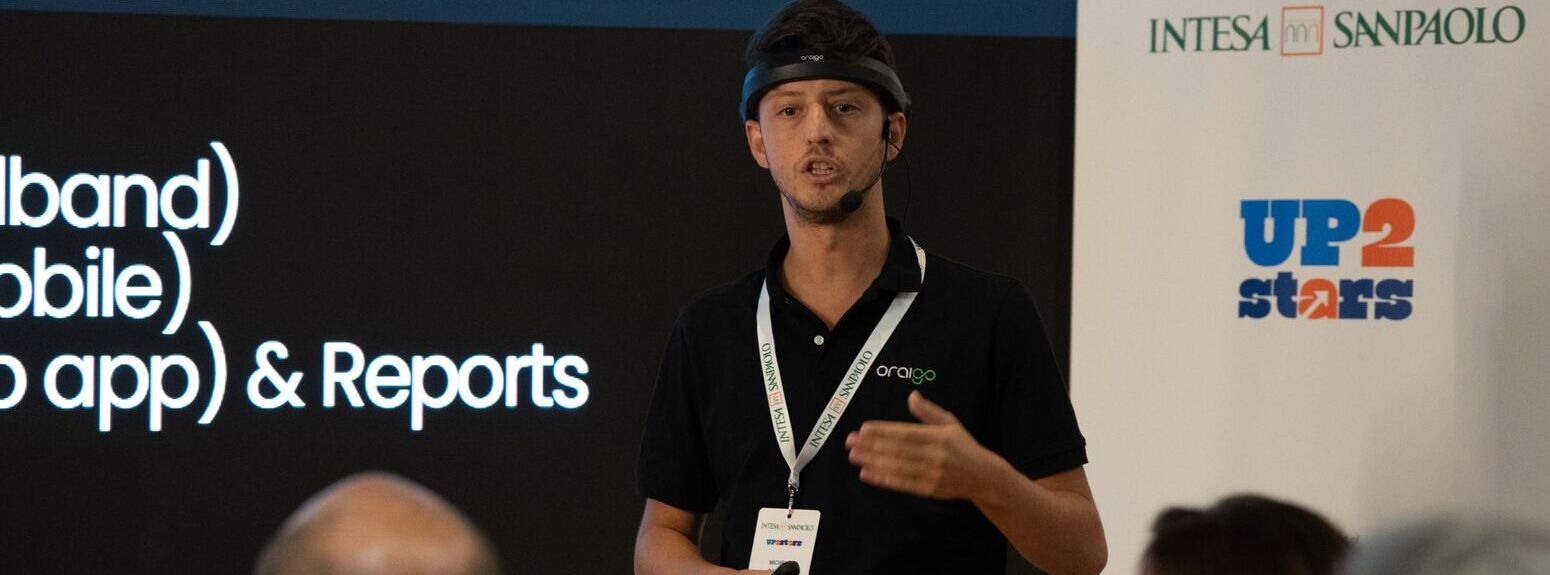
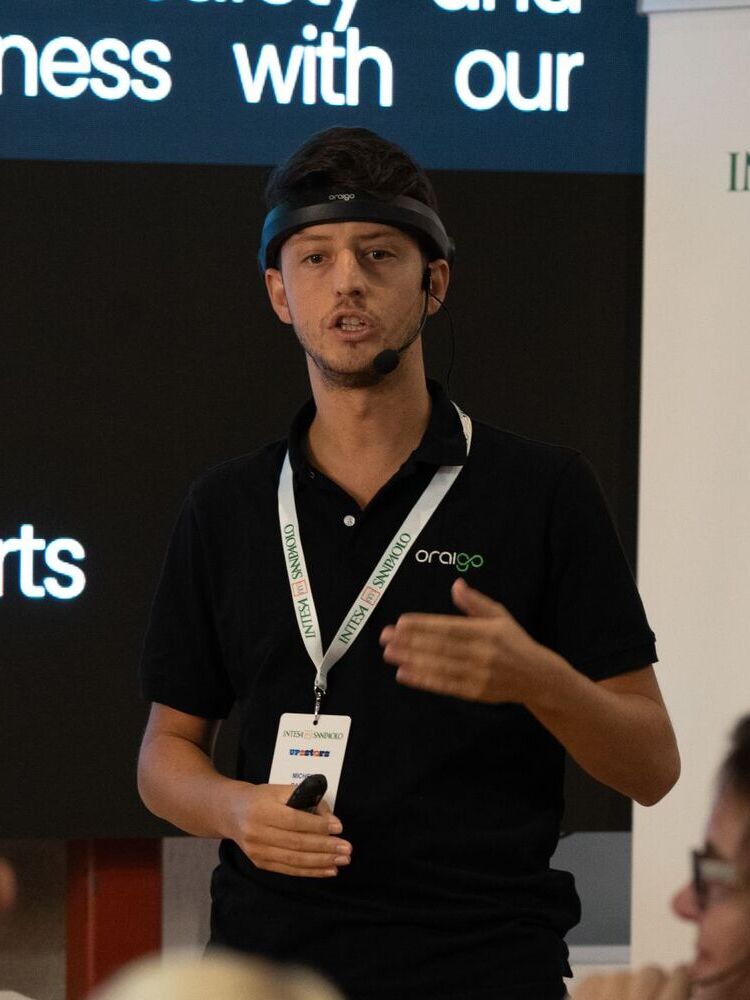
The Role of Intesa Sanpaolo and Intesa Sanpaolo Innovation Center in Oraigo's Success
The Up2stars journey
In Oraigo's success, a significant role was played by the Intesa Sanpaolo Group. In fact, participation in the 2024 edition of Up2Stars - Intesa Sanpaolo's acceleration program realized in collaboration with Intesa Sanpaolo Innovation Center and with the support of the innovation platform Gellify - represented a crucial step for the maturation of the Padua-based startup.
“Being selected for Up2Stars proved particularly useful, allowing us to connect with a network of professionals. Thanks to the feedback and suggestions, we also reshaped the offer aimed at potential customers. For example,” emphasizes Galetta, “we signed agreements with the Intesa Sanpaolo Group and, through Intesa Sanpaolo Rent Foryou, we can offer our customers the possibility of paying for our device with a monthly fee: significant commercial support”.
Participation in the Silicon Valley special acceleration program
Additionally, the Padua-based startup benefited from the opportunity to travel to Silicon Valley in September 2024 for the special acceleration program organized by Intesa Sanpaolo in collaboration with INNOVIT (Italian Innovation and Culture Hub) and Intesa Sanpaolo Innovation Center, aimed at promoting the excellence of Italian innovation in the most dynamic and competitive innovative ecosystem globally.
“An intense program that allowed us to understand a mindset decidedly faster than the European one, as it tends to start sales as soon as possible, leaving the market to validate the business idea. Moreover, it allowed us to understand how the US capital market works. After the first experience organized by INNOVIT in 2023, I welcomed the opportunity to repeat it,” emphasizes Galetta.
Oraigo's future, between internationalisation and new business prospects
A consistent step with the business idea, given the international vocation of the innovation realized by Oraigo. Indeed, after the Italian, Japanese, and Australian patents, the technology is patent pending in the United States, China, India, Canada, Israel, and Hong Kong.
Always looking to the future, another goal is to involve universities, research centers, and companies to explore new areas of technology application. “It's as if we created a computer whose first application is to counteract drowsiness at the wheel. Now, the intention is to leverage brain waves and the ecosystem we created to develop other solutions, with many possible applications we are considering,” concludes Galetta
All the Startup Tales

